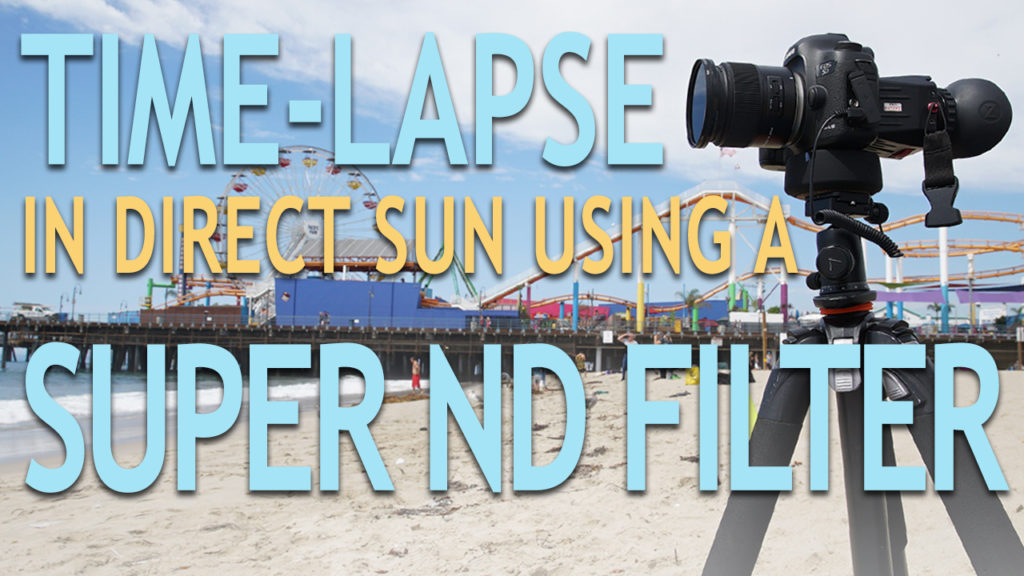Life is tough here in California. We’re down at the beach with all the ocean waves and people, and we’re eating a pretzel. And we’re shooting a time-lapse.
We’re down at the Santa Monica pier, shooting some time-lapse with the new Syrp super dark ND filter. We’re shooting the time-lapse into this direct sunlight but we want our water to look really beautiful and blurry. We want that really romantic feeling in the water. So we need an ND filter that is capable of really crushing the sunlight. I’m at 100 ISO at f16 and I can’t get the long exposure that I want.
When we arrived this morning we had a pretty good cloud cover. So I put that super dark ND filter from Syrp on there and got a four second exposure. But the sun wasn’t out yet. So that four second exposure looked great.
But now the sun is out. It’s direct sun. I’ve got really harsh conditions here. And I’ve got to be able to get a long exposure to still give me that motion in the water. In order to get a two second exposure, I’m going to have to have all the ND I can get on there. I’m using that super dark ND all the way to it’s darkest setting. It’s 10 stops plus. And then I’m going to be able to go to two seconds, still at f16 at 100 ISO and get the motion in the water that I want. So I used a two axis setup with the Genie Mini here. One to pan across the ocean here, because I want to see the water, and the second one just to tilt up just a little bit so I can see the Ferris wheel at the end of the time-lapse. I wanted to stay mostly on the water and then tilt up to the Ferris wheel at the end. So it’s pretty much at a 60-degree pan, and just about an eight degree tilt up at the very end. I also love that I can hit the preview mode, put it in video mode and watch it in real time to see exactly what it’s doing.
If you want the dreamy look that long exposures give you for people, cars, or water, you’ve got to have an ND filter that’s going to be able to handle direct sunlight. I always carry a loupe with me. That allows me to look at the back of my camera in the sun and see my settings and images to make sure they’re exposed correctly. I can even use it on my Syrp. I use a Zacuto loupe which I really love.
The sun is coming right over my shoulder towards the pier. This way I get a nicer look in the clouds in the background. The sky’s a lot darker. You don’t get the flare and the blown out sky that you get if you look back the other direction. So you want to look with the sun over your right or left shoulder, back towards your subject matter and that direct sun is going to give you the best exposure.
I chose Tamron’s 1.8, 35mm lens because I wanted a nice, broad view of the ocean as it sweeps across that landscape. I didn’t want it too tight. I wanted to be able to see sand and the ocean in the background. I looked at the 45, but I didn’t love that. The 35mm gives me that gentle pan and it’ll be a nice time-lapse.
You also, of course, need a good tripod to hold your camera. I’m using the Vanguard ABEO 243.
It’s been gorgeous out here. And a lot of fun to be at the beach. Actually it’s not been that much fun. I hate sand. It’s in my equipment, it’s in my brand new shoes. I’m done with this. I’m going home.
Keep those cameras rollin’, keep on clickin’.

